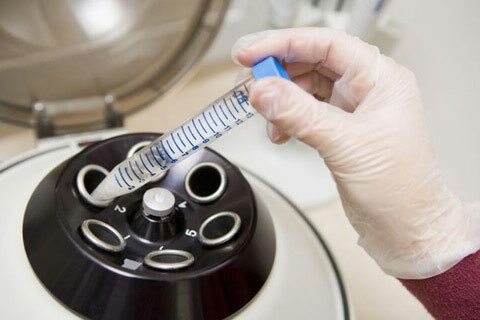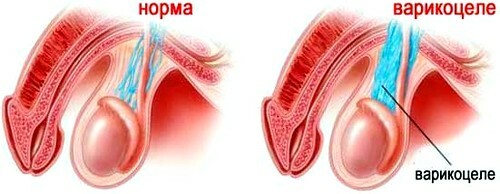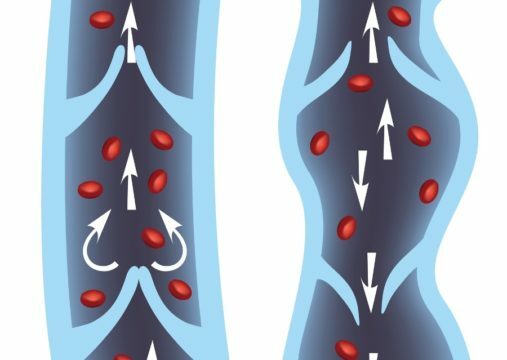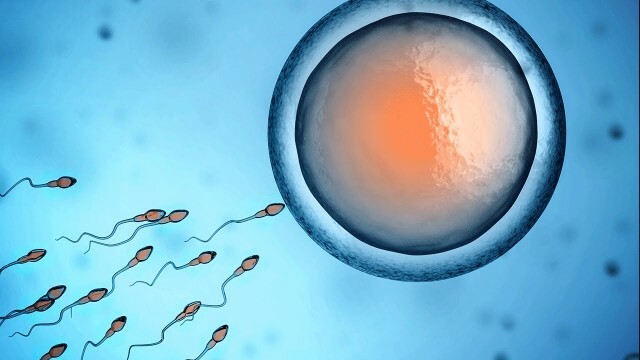Varicocele is recognized as one of the most common pathologies among the male half of the population. In fact, the disease is associated with varicose veins of the testicle and spermatic cord. By itself, the ailment is not considered serious, but is capable, in the absence of treatment, to lead to male infertility.
Features of the disease
According to the World Health Organization, this pathology occurs in 15-17% of the total male population. There is a different frequency of spreading, depending on the region of residence and the age of the patients. So with the help of ultrasound methods of investigation, the disease is detected in about a third of patients of reproductive age. On the draft commissions, the frequency of diagnosis of pathology reaches 7%, and in adolescents 13-15 years - 19.3%.
In the overwhelming number of cases, vein dilatation occurs on the left side. Two-sided pathology is much less common than one-sided pathology. A vein of the right testicle occurs only in 3-8% of the total number of cases. According to doctors, the disease begins to develop at an early age, when the period of puberty begins. The course of the testicular varicocele is rapid, reaching a certain degree, the ailment ceases to progress.
Often the patient does not experience any unpleasant sensations, and the diagnosis is established accidentally, during a planned medical examination. The causes of the disease, one way or another, are associated with disturbances in the work of inguinal vessels. After the operation, the overwhelming number of patients noted restoration of genital functions.
Symptoms of
Symptoms of varicocele in men are either absent or blurred. A young person can visually observe growth in the size of the left testicle, a slight pulling pain in it, which is enhanced by physical exertion or agitation. The enlargement of the scrotum disappears when the patient is in a horizontal position.
With the start of the disease, there may be severe pain, a significant swelling of the left testicle with protrusion of the veins. When conducting a laboratory examination of the ejaculate, the patient is noted to decrease the total number of spermatozoa and their mobility.
Depending on the dilatation of the vessels, 4 degrees of the disease are diagnosed:
- 0 degree - with its veins not visible and not detectable by palpation, the pathology can be determined only by ultrasound or Doppler.
- 1 degree - crimp and vein enlargement is palpated only in the standing position, lying signs of varicocele do not manifest.
- 2 degree - enlarged vessels can be easily probed, but visually they are not determined.
- 3rd degree - varicocele on the left or on the right is visible during normal examination.
In very rare cases, note the transition of one degree of pathology to another. Unpleasant sensations can be absent and at 3 degrees of disease. Of particular danger is that, with varicocele, the symptoms are usually mild. Because of this, the patient does not consult a doctor for a long time, until the size of the affected testicle begins to significantly interfere with walking.
Causes of
The appearance of this pathology in men can be explained by the fact that the vascular valves, designed to prevent reverse blood flow, cease to function normally. This causes an increase in pressure in the vein, especially with physical exertion. The blood begins to press against the walls of the vessel, causing it to gradually expand. In some cases, this pathology is eliminated only after surgery. In many respects, the degree to which the varicocele achieves depends on the strength of the patient's vessels. With further development of the pathology, the testicle appears in a kind of blood sponge from the veins, normal thermoregulation of the testicles is disrupted, resulting in a deterioration in the production of spermatozoa. In the absence of treatment, infertility may occur.
The main reasons for reducing spermatogenesis in this disease are:
- Disturbance of thermoregulation in the testicle( it overheats);
- Some active substances enter the scrotum due to malfunction of the vascular valves;
- Disruption of supply of testicles with oxygen( ischemia);
- Accumulation of decay products in the scrotum.
When analyzing the causes of infertility in the male population, varicocele is recognized as the main factor leading to infertility.
Diagnostics features of
It is not difficult to identify the disease most often. The diagnosis is made by a phlebologist during the examination and questioning of the patient. The examination of the patient is carried out in two positions: standing and lying. If the veins are not visually or through the palpation, the doctor prescribes ultrasound examination of the kidneys and pelvic organs to differentiate the disease from other similar symptoms of the genitourinary system. When carrying out ultrasound, varicocele symptoms are detected even at the very beginning of the disease. The state of the vessels of the scrotum can be determined using magnetic resonance imaging or computed tomography.

For adults of age, a spermogram is prescribed. When varicocele, physicians detect asthenozoospermia( decreased mobility) and oligospermia( decrease in the number) of spermatozoa. Dopplerography can be used as an intermediate method of examination when subclinical forms of the disease are identified. In the preparation of the curative program, retrograde renal and testicular venography is used, and antegrade venography is performed after the operation.
Therapy
If varicocele is a secondary disease, treatment, in the first place, should be aimed at eliminating the underlying pathology. At expansion of veins of 0 and 1 degree surgical intervention is not applied. Use methods that are aimed at eliminating blood stagnation in the pelvic area( moderate exercise, treatment of prolonged constipation, etc.).At the same time, periodic examinations are carried out to determine the state of the vessels of the patient's scrotum, in order to detect the possible development of the disease in time.
In some cases, elderly people get a good result when wearing a bandage. If the patient begins to suffer severe pain( grade 2-3), surgery will be required. Conditions under which surgical treatment is prescribed:
- severe pain;
- infringement of sperm formation;
- abnormal reduction in the size of the affected testicle;
- risk of other complications.
Most experts believe that, when diagnosing varicocele in children or adolescents, the operation is indicated in any case to eliminate the possibility of infertility in the future. Surgical treatment can be carried out in several ways: by raising the testicle, embolizing the vessels, or by excising them. The latter option is performed subinvinally( input into the inguinal canal( PC)), ingvinal( inside the PC) or retroprimononeal( output from the PC).
Today, microsurgical and laparoscopic( using special tubes inserted into the cavity through small incisions on the skin) are actively used to make surgical interventions that significantly reduce the likelihood of complications and recurrence of the disease. After the operation, regardless of the presence or absence of unpleasant symptoms, the patient undergoes a complete examination using ultrasound and x-rays to determine how successful the therapy was and to rule out the possibility of relapse.
Preventive measures
In the presence of vascular pathologies, patients should avoid significant and prolonged physical exertion to prevent the development of varicocele. With constipation, it is necessary to take mild laxatives, exclude the reception of hard and hard-to-digest food. It is not desirable to drink alcohol. Do not wear tight and uncomfortable underwear. A man needs to have a regular sex life, take care of a full rest.
After surgery for varicocele, you need to periodically go through a survey from a phlebologist or urologist to rule out the recurrence of the disease. In the initial stage of the disease, a good result can be achieved by eliminating stagnant phenomena in the pelvis.





